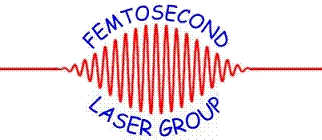Department of Physics and Astronomy: Publications and Other Research

C.J.G.J. Uiterwaal Publications
Document Type
Article
Date of this Version
2011
Citation
Phys. Chem. Chem. Phys., 2011, 13, 13783–13790
DOI: 10.1039/c1cp20876d
Abstract
We report on the photoionization and photofragmentation of benzene (C6H6) and of the monohalobenzenes C6H5–X (X = F, Cl, Br, I) under intense-field, single-molecule conditions. We focus 50-fs, 804-nm pulses from a Ti:sapphire laser source, and record ion mass spectra as a function of intensity in the range ~1013 W/cm2 to ~1015 W/cm2. We count ions that were created in the central, most intense part of the focal area; ions from other regions are rejected. For all targets, stable parent ions (C6H5X+) are observed. Our data is consistent with resonance-enhanced multiphoton ionization (REMPI) involving the neutral 1ππ* excited state (primarily a phenyl excitation): all of our plots of parent ion yield versus intensity display a kink when this excitation saturates. From the intensity dependence of the ion yield we infer that both the HOMO and the HOMO-1 contribute to ionization in C6H5F and C6H5Cl. The proportion of phenyl (C6H5) fragments in the mass spectra increases in the order X = F, Cl, Br, I. We ascribe these substituent-dependent observations to the different lifetimes of the C6H5X 1ππ* states. In X = I the heavy-atom effect leads to ultrafast intersystem crossing to a dissociative 3nσ* state. This breaks the C–I bond in an early stage of the ultrashort pulse, which explains the abundance of fragments that we find in the iodobenzene mass spectrum. For the lighter X = F, Cl, and Br this dissociation is much slower, which explains the lesser degree of fragmentation observed for these three molecules.
Included in
Atomic, Molecular and Optical Physics Commons, Biological and Chemical Physics Commons, Physical Chemistry Commons


Comments
Copyright 2011 Royal Society of Chemistry.